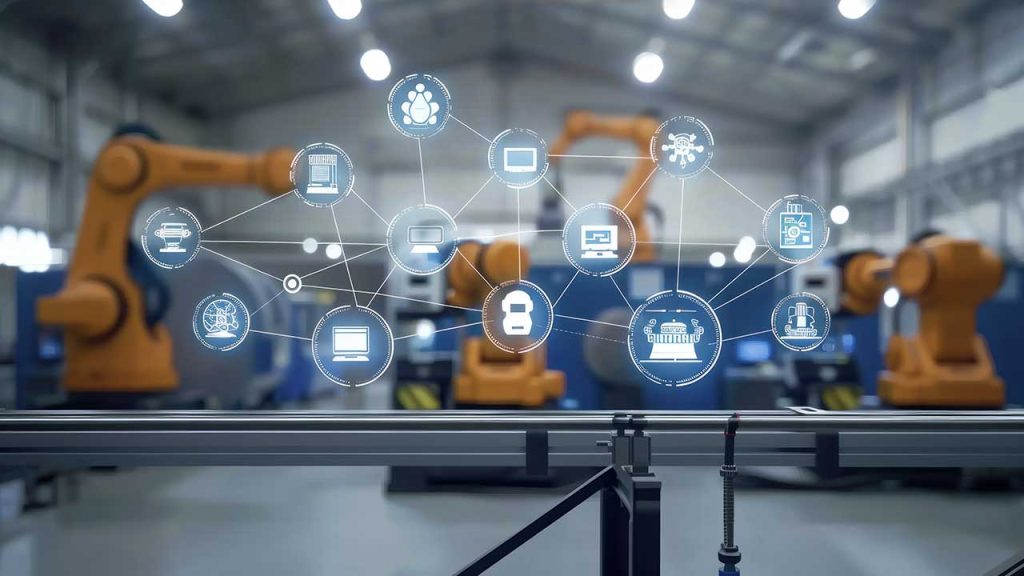How Much Prep Work Do Trusted AI Agents Really Need on the Factory Floor?
Picture a line drifting off spec at midnight. Operators don’t want a chatbot—they need a system that notices the issue, understands the context, and recommends an action they can trust. That trust isn’t created at the moment of the alert; it’s built weeks earlier in how you prepare your data, systems, and people. During “Agentic AI in Manufacturing: From Copilots to Autonomous Systems”, someone from the audience asked two blunt questions: How much work goes into getting data and processes ready so agents can make sound, timely recommendations—and do experts always need to vet those actions?
Below is a practical synthesis of the panel’s answer, focused on what manufacturers can actually do next.
The real work happens before the agent speaks
The panel emphasized that readiness is less about squeezing a few more points of accuracy from a model and more about making the environment agent-friendly.
- Unified access to the essentials. Agents need low-latency, real-time streams for detection and response, plus historical data to learn patterns. This unified access doesn’t happen by accident: It requires a central, secure and scalable data foundation. Such a digital backbone enables seamless connectivity across HMIs, SCADA, MES, CMMS and PLM systems.
- Context beats volume. Metadata—units, ranges, states, equipment relationships—was called the most underestimated barrier. Without clear meaning, agents can’t reason about thresholds, severity, or trade-offs.
- Governance and ownership. Define who owns which datasets and decisions, ensure auditability, and build an agile stack that can onboard new tools quickly. The organizational setup matters as much as the technology.
- Edge-plus-cloud by design. Keep time-critical detection and actions near the line (edge) and use cloud for aggregation, training, and coordination. Control cost and complexity by reusing common data models and connectors across use cases.
- Standardization and interoperability. Avoid bespoke adapters plant by plant. Standardize sensing and data interfaces early so new lines don’t become one-off engineering projects.
- People and change. Operators must see agents as partners. That takes transparency, training, and staged rollouts that prove value in their day-to-day tools.
The session didn’t offer a percentage split of effort, but the message was clear: expect the majority of work to be in data plumbing, context modeling, integration, and governance—not in the last mile of model tuning.
Should an expert always vet the recommendation?
Start with human-in-the-loop, then earn autonomy.
- Early phase: advisory. Surface recommendations inside the tools people already use (HMI/SCADA/MES). Humans validate and act, building trust while capturing feedback for improvement.
- Respect ISA-95 layers. At Levels 0–1 (sensors, actuators, controllers), agents should monitor and advise—not move setpoints. Safety and process integrity come first.
- Where autonomy grows first. Level 3 (MES) is the “sweet spot” for orchestrating workflows, scheduling, and preparing work orders. As validation, reliability, and audit trails mature, you can reduce mandatory expert review for specific, well-understood actions.
- Guardrails never go out of style. Maintain explainability and a safe rollback path, especially in regulated settings.
A readiness playbook you can run this quarter
- Pick one outcome and one asset family
Choose a concrete target (for example, reduce changeover time or unplanned downtime) and the assets that influence it most. - Standardize the minimum viable signals
Define the tags, units, states, alarm codes, and sampling cadence you actually need. Small and consistent beats exhaustive and brittle. - Wire real-time plus history
Give the agent low-latency telemetry and enough historical context to learn thresholds and seasonality. - Put guidance where work happens
Embed recommendations in operators’ existing interfaces and maintenance apps. Capture overrides and reasons—that feedback is fuel for the next iteration. - Stage autonomy deliberately
Begin with “recommend + prepare” (draft the work order with parts and timing). Shift to “recommend + execute with approval,” and then to auto-approval for narrowly scoped actions once performance holds across shifts. - Measure time-to-impact, not just accuracy
Track time-to-detect, time-to-action, avoided downtime, scrap reduction, and operator adoption. These tell you whether recommendations translate into better outcomes.
Risks to design for up front
- Safety and security. Treat controller (PLC) interfaces as high-risk. Segment networks and block uncontrolled setpoint changes.
- Compliance and explainability. In regulated environments, overlapping standards demand validation evidence and traceable reasoning for each action.
- Cost creep. If every use case brings its own stack, expenses balloon. Reuse the existing data infrastructure, data models, connectors, and services to keep edge and cloud costs in check.
What good looks like after a few months
- Similar assets “look” the same across lines and sites; onboarding is measured in weeks, not quarters.
- Operators trust the guidance because it is timely, actionable, and embedded in their daily tools.
- Finance can see movement on operational KPIs across shifts, not only when the A-team is on.
- Autonomy increases for clearly defined action classes, while higher-risk steps remain gated by experts.
Takeaway for manufacturers
If you want agents that act with confidence at midnight, invest in the daylight work: consistent signals, meaningful context, clear governance, and operator-first rollouts. Begin with advisory recommendations, prove value where it’s safest and most visible, and expand autonomy as reliability and auditability mature. Expert vetting is essential at first and in safety-critical steps—but it doesn’t have to be permanent.
Source: “Agentic AI in Manufacturing: From Copilots to Autonomous Systems”, sponsored by Cybus and Infinite Uptime, Inc., part of the AI Frontiers 2025 IIoT World’s event.
Related articles:



